- Home
- Kathy Reichs
206 Bones Page 3
206 Bones Read online
Page 3
“Clarification?” Ryan matched cool with cool.
“He is deeply troubled.”
“You have copies of our reports?”
Schechter withdrew a yellow legal pad, a gold Cross pen, and a large white envelope from his briefcase. I recognized the envelope’s logo, and the words Laboratoire de sciences judiciaires et de médecine légale.
“Dr. Brennan and I have prepared scene and autopsy photos to walk you through the investigation.”
Clicking his pen to readiness, Schechter gave an imperious wave of one hand.
Ryan spoke to me in French. “Let’s clarify this prick’s head right out of his ass.”
“Certainement,” I agreed.
Connecting my laptop to the projector, I opened PowerPoint, chose a file labeled LSJML 44893, and double-clicked an image. A wide-angle view of L’Auberge des Neiges filled the screen. Built of redwood, with carved and painted balconies and window boxes, the inn looked like something straight out of The Sound of Music.
Corcoran handed me the laser pointer.
Ryan began.
“Ms. Jurmain checked into L’Auberge des Neiges on twenty September, having reserved for two weeks. On twenty-three September she volunteered to other guests her intent to hike the following day.”
“These other guests would be?” Schechter asked.
Ryan checked his notes.
“John William Manning of Montreal. Isabelle Picard of Laval. According to Manning and Picard, Ms. Jurmain appeared inebriated that evening, and had appeared to be so on several occasions spanning a period of three days.”
Ryan slid several papers across the table, I assumed summaries of interviews with the auberge’s staff and guests. Corcoran skimmed. Schechter took his time reading. Then, “These are written in French.”
“My apologies.” Ryan’s tone was as far from apologetic as a tone can be.
Schechter made an indecipherable noise in his throat.
I switched to a wide shot of Rose’s room. It featured a braided rug, lacquered pine furniture, and an overabundance of pink floral chintz. A suitcase sat open on a small settee, clothes oozing like magma from a sleepy volcano.
I moved to a picture of the bed stand, then to close-ups of the labels on five small vials. Oxycodone. Diazepam. Temazepam. Alprazolam. Doxylamine.
I aimed the laser pointer. As the small red dot jumped from vial to vial, Corcoran translated into generic names for Schechter.
“The painkiller OxyContin, the antianxiety drugs Valium and Xanax, and the sleep aids Restoril and Unisom.”
Schechter drew air through his nostrils, exhaled slowly.
“When Rose got an idea into her head there was no reasoning with her. Always going off into the woods. Three years ago it was Quebec.” He said Quee-beck with the disgust one might reserve for “Eye-rack” or “Dar-four.” “Even though her”—he paused, seeking proper phrasing—“health was not good, she could not be dissuaded.”
Ryan proceeded without comment.
“At fifteen twenty hours, on twenty-four September, Ms. Jurmain was seen walking alone along Chemin Pierre-Mirabeau, in the direction of Sainte-Marguerite. Though the temperature was near freezing, a motorist reported that she wore a lightweight jacket, no hat, no gloves.”
As I projected a regional map, Ryan slid another paper to Schechter.
“Sunset that day was at approximately seventeen hundred hours. By nineteen hundred hours it was full dark. Overnight, temperatures fell to minus eight Celsius.
“On twenty-five September, it was noted that Ms. Jurmain had failed to return to the inn. A call was placed to an area code three-one-two number provided upon check-in. Subsequent investigation showed that line to be nonexistent.
“On twenty-six September, the SQ post covering Sainte-Marguerite was notified of Ms. Jurmain’s disappearance. Woods bordering the road and surrounding the auberge were searched with tracker dogs. Unsuccessfully.”
More paper.
“What is this SQ?” Schechter demanded.
“La Sûreté du Québec. The provincial police.”
“Why not call the locals?”
Ryan launched into a primer on law enforcement Quebec-style, laying on a thick Maurice Chevalier where opportunity presented itself.
“In cities and larger towns there are local forces. On the Island of Montreal, for example, policing is the responsibility of the Service de police de la Ville de Montréal, or SPVM, formerly known as the service de police de la communauté urbaine de Montréal, or CUM. Same force, new name.
“In rural areas, law enforcement is handled by La Sûreté du Québec, or SQ. In places without provincial police, meaning all provinces except Ontario and Quebec, it’s the Royal Canadian Mounted Police, or RCMP, or, to Francophones, the Gendarmerie royale du Canada, or GRC. Occasionally, the Mounties are invited into an investigation in Quebec, but that’s rare.”
In other words, jurisdiction in La Belle Province can be as confusing as in any American state. FBI. State bureau of investigation. City. County. Highway patrol. Sheriff’s department. Who you gonna call? Good luck. Bonne chance. Ryan didn’t say that.
“L’Auberge des Neiges is located seventy-five kilometers north of the Island of Montreal, in the Laurentian Mountains. The nearest town is Sainte-Marguerite. Thus, Ms. Jurmain’s case fell to the SQ. Shall I continue?”
Again Schechter flapped an arrogant hand. I wanted to reach across the table and smack the self-righteous little prick.
“Thirty months after Ms. Jurmain’s disappearance, on twenty-one March, André Dubreuil and his son Bertrand stumbled on what they believed to be human remains. Their find was located twenty yards off a provincial road, approximately one half mile north of L’Auberge des Neiges. The SQ, the coroner, and the LSJML were notified. In that order.”
As I projected a second map, Schechter jotted his first note of the morning. Then, “You are a homicide detective with this SQ?”
“Section des crimes contre la personne.”
I translated. “Detective Ryan is with the equivalent of homicide, a section called Crimes Against Persons. He is assigned to special cases.”
“And this case would be deemed special because . . . ?” Schechter elongated the last word of his unfinished statement.
“From the outset it was suspected that the remains in question were those of Ms. Jurmain. Since she was a non-Canadian national, an American, the case was assigned to Detective Ryan.”
Schechter and Corcoran glanced at the police incident report Ryan slid to them. When their attention returned to the screen I moved through a new series of JPEGs.
The first provided a wide-angle view of a narrow two-lane blacktop, its gravel shoulder butting up to dense forest. The next six documented the route from the road to the body. On the ground, islands of snow overlaid dead vegetation, their perimeters darkened by meltwater runoff.
The eighth image showed yellow crime scene tape looping a stand of pines. In the ninth, people stood inside the tape. Ryan was there in a pea green parka and bright blue scarf. Two recovery techs wore navy jumpsuits stamped Service de l’identité judiciaire, Division des scènes de crime. So did I. Vapor billowed from every mouth.
Shot ten was a close-up of a small dark mound emerging from the snow. Embedded in the jumble of leaves, twigs, moss, and pine needles was a glossy brown object the size of a cabbage. A mass of matted gray hair lay to its right.
“The skull.” I circled it using the laser pointer.
The next few shots focused on the partial skeleton, spread in a largely linear pattern from the skull. Mandible. Vertebrae. Ribs. Sternum. Pelvic halves. Sacrum. Right hand. Right leg. Everything was stained the same burnt umber.
One by one, I named the bones.
“Obviously human,” Corcoran said.
“Animals had scattered bones over approximately twenty square meters,” I said.
As I projected my site map, Ryan produced hard copies. “Dr. Brennan documented the position of each s
keletal element.”
When Corcoran and Schechter looked up, I resumed the presentation, moving outward from the central cluster through the dispersed remains.
“Each plastic cone marks the location of a bone or bone cluster.” Advancing through the images, I again identified body parts. “Right femur, tibia, and patella. Right calcaneous. Right tarsals, metatarsals, and phalanges. Right radius. Right ulna and hand bones. Left lower central incisor. Right upper central incisor.”
“Could we move this along?” Schechter said.
Ryan resumed.
“Given Ms. Jurmain’s known history of alcoholism, the evidence of prescription drug abuse, eyewitness accounts, and the climatic conditions on the night of her absence from the inn, the coroner ruled manner of death as accidental and cause of death as hypothermia exacerbated by intoxication.”
“You’re saying Rose got drunk, wandered off, and froze to death.” Schechter.
“Basically, yes. Shortly, Dr. Brennan will discuss skeletal identification and analysis of trauma.”
“Not shortly. Now.”
“Sir?”
“Enough of this ridiculous subterfuge.”
Startled, I looked at Ryan. His face was a stone mask pointed at the lawyer across the table. Recognizing his expression, I jumped in.
“Detective Ryan has been providing background for the coroner’s conclusion. But if your preference is to move on, we have no objection.”
“I suggest we go directly to your report, Dr. Brennan.”
“I suggest you specify what it is you want.” Ryan’s tone was a steel blade.
“Very well, Detective.” Schechter’s chin cocked up slightly. “My client does not believe his daughter died of exposure. He believes she was murdered.”
Placing both forearms on the tabletop, Schechter laced his fingers, and leaned in.
“Further, he believes Dr. Brennan concealed that fact.”
4
MY EYES JUMPED TO CORCORAN. HE CONTINUED staring at the screen.
“Is that so?” Ryan’s tone suggested trench warfare. “To what purpose?”
“That is what I intend to find out.”
Schechter wiggled manicured fingers at the pointer.
I handed it to him.
“Project the close-up of the undisturbed remains.”
Stomach knotted, I did as requested. As demanded.
The red dot appeared on the half-buried skeleton, drifted across the mandible, the clavicles, and the upper ribs. Coming to rest, it performed jerky pirouettes around the breastbone.
“That’s the sternum,” I said.
“I am aware of that.”
The gut clench eased. Was that where Schechter was going? If so, he was a bigger dumbass than I thought. He must not have consulted an osteologist.
Closing the death scene file, I opened another containing photos taken at the LSJML. The first few depicted a body bag, zipped then unzipped, the latter displaying jumbled bones visible in the bag’s interior.
The next series showed an autopsy table, dirt-encrusted skeleton atop the stainless steel. A few bones were connected by desiccated muscle or ligament. Most lay loose, in positions approximating those they’d occupied when the body was intact.
“Here you see the remains as they arrived at the morgue, prior to any manipulation. Shall I identify individual elements?”
Schechter gave another haughty wave. The old wheezer had quite a repertoire.
“Shall I explain my cleaning process?”
“Not germane.”
“Dandy. Let’s proceed to ID.”
“My client does not question that the remains are those of his daughter.”
“Groovy. Let’s talk about trauma. Shall I clarify the terms antemortem, perimortem, and postmortem?”
“Succinctly.”
“With skeletal remains, antemortem refers to trauma occurring prior to death, injuries sustained earlier in life and showing evidence of healing. Perimortem refers to trauma suffered at or close to the time of death. Postmortem refers to trauma inflicted after death, damage associated with decomposition, abuse of the body, animal scavenging, and such.”
“How is this germane?” Clearly, Schechter liked the word.
“It is germane to your client’s understanding of what happened to his daughter. And, perhaps more important, what did not.”
Again the hand.
“I will not belabor the importance of distinguishing between perimortem and postmortem trauma. I would like to make clear, however, that, for the anthropologist, this distinction has more to do with bone quality than it does with time of death. It’s a complex subject, so forgive me if I oversimplify.
“In fresh or living bone the moisture content is relatively high and the collagen, the component that gives bone its elasticity, is somewhat flexible. This permits a certain degree of bending under stress. With decomposition, moisture is lost and collagen degrades, so the bending capability diminishes. In other words, dry bone responds to loading like an inorganic, rather than an organic, material. It fails, or breaks, when subjected to smaller forces. Think of a green stick versus a dry stick. The former yields, the latter snaps under pressure.”
Schechter made a note on his tablet but did not interrupt.
“Practically speaking, this means that fractures to dry bone are less clean and have more jagged edges. Fragments tend to be smaller. Breakaway spurs, relatively common in fresh bone, are rare. Concentric circular and radiating fractures, patterns produced by the transmission of energy through bone, are uncommon.”
“Most impressive. We’re all experts now.”
Knowing his game book, I ignored Schechter’s rudeness.
“Distinguishing an antemortem injury or defect is equally important in accurately determining manner of death. Since the first signs of healing are often difficult to detect, skeletal remains are examined on three levels, macroscopic, radiographic, and histologic.”
“Let’s skip the jargon.” Schechter.
“Macroscopic means eyeballing. The first indication of antemortem repair is a narrow band of surface resorption immediately adjacent to the fracture site. This reflects inflammation at the point where the overlying membrane was torn away. Next, gradual erosion can be seen at the broken ends. These changes are evident anywhere from ten to fourteen days after injury.
“Radiographic means X-ray. Here healing appears as a blurring of the fractured edges, again roughly ten to fourteen days post-injury. The gap between the broken ends then widens as callus formation proceeds.”
Schechter’s eyes narrowed slightly.
“A callus is an unorganized network of woven bone that forms quickly at a fracture site. It functions like putty to hold the broken ends in place. As repair progresses, the callus is gradually replaced by true bone.
“Histologic means under the microscope. Here healing is first evidenced by spicules of woven bone within the callus. These spicules can be seen as early as five to seven days post-injury.”
“Will we be getting to Rose sometime today?”
I opened a new PowerPoint file. Rose’s skeleton was now in my lab, clean of soil and tissue. Each bone was aligned with anatomical precision, right down to the distal phalanges of the hands and feet.
“As Detective Ryan mentioned earlier, the remains suffered considerable postmortem damage due to animal scavenging.”
I chose a shot of Rose’s right thigh bone. Instead of a rounded knob on one end and condyles on the other, the femoral shaft terminated in long jagged spikes. I clicked to the tibia, then the fibula, demonstrating similar damage in the lower leg.
“Notice the cracking and longitudinal splintering. Those features, along with dispersal of elements away from the body, suggest large carnivore feeding.”
Moving to a femoral close-up, I pointed the laser at one circular defect, then another.
“Those are canine tooth punctures. Based on size, I’d say the diners were Ursus americanus.”
�
�Black bears,” Corcoran said.
“Bears eat carrion?” Schechter made no attempt to hide his revulsion.
“With relish,” I said.
I proceeded to a tight shot of the lower jaw.
“But they weren’t alone. Notice the lower edge.” I ran the beam along the mandibular border. “See the parallel grooving?”
“Rodent gnawing,” Corcoran said.
“Exactly. Once skeletonization was complete, the rats and mice moved in.”
Corcoran was slowly wagging his head. “I’ve never understood the appeal once the flesh is gone.”
“Dry bone is a rich source of dietary mineral and protein.”
Schechter pulled on his nose with a thumb and index finger. “If your point is to shock me, Dr. Brennan, you fail.”
“My point is to inform you.”
“Let’s cut to the chase.” Schechter glared in my direction.
“Let’s.” I almost smiled. I was looking forward to deflating this arrogant gasbag.
“Bottom line.” Leaning forward, I rested my forearms and interlaced my fingers as Schechter had done. “I observed significant damage to Rose Jurmain’s skeleton, all of it postmortem in nature.”
“What do you mean postmortem in nature?”
“I mean postmortem. As in, inflicted after death.”
“By bears.”
“And rodents.”
“You observed no evidence of perimortem trauma?”
“Neither perimortem nor antemortem.”
“What about the sternum.”
“You heard me.”
Schechter’s mouth crawled into a reptilian smile. “Have you no image of the sternum, Doctor? Or are you reluctant to share it?”
Ryan moved forward in his chair. I laid a hand on his arm. He looked at me. I gave a barely perceptible shake of my head.
“C’est un ostie de crosseur.” The guy’s a flaming asshole. Roughly translated.
“He’s going down,” I replied in French.
I worked keys on my laptop. Rose’s breastbone replaced her jaw on the screen. Beside it was an X-ray.
Snatching the pointer, Schechter danced the red dot around a small round defect two inches up from the bone’s lower end. The dot then shot to the X-ray, where the defect appeared as a dark circle within the gray-white of the bone’s spongy interior.

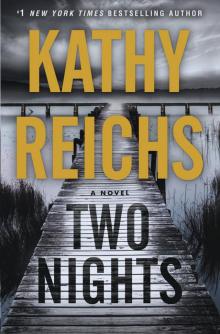 Two Nights
Two Nights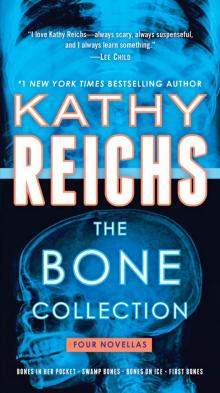 The Bone Collection: Four Novellas
The Bone Collection: Four Novellas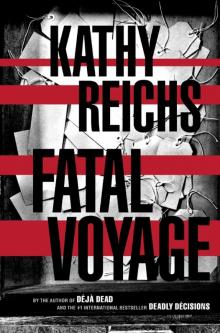 Fatal Voyage
Fatal Voyage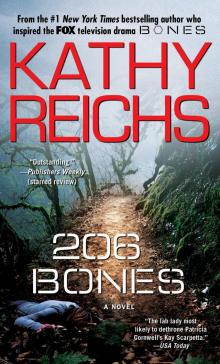 206 Bones
206 Bones Bones to Ashes
Bones to Ashes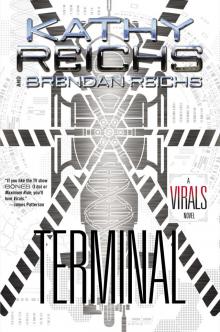 Terminal
Terminal Monday Mourning
Monday Mourning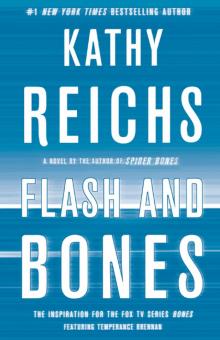 Flash and Bones
Flash and Bones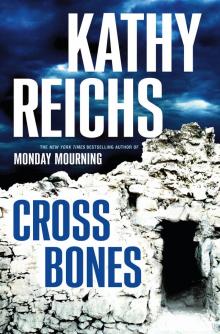 Cross Bones
Cross Bones Devil Bones
Devil Bones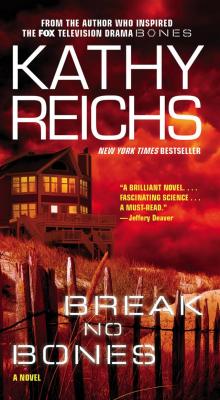 Break No Bones
Break No Bones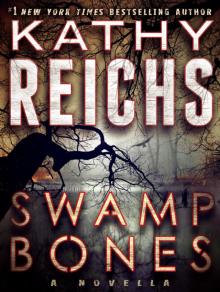 Swamp Bones
Swamp Bones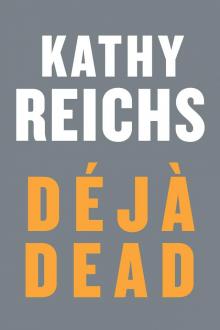 Déjà Dead
Déjà Dead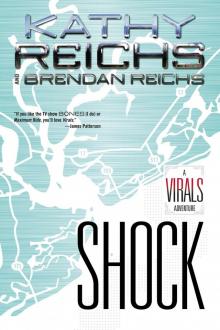 Shock
Shock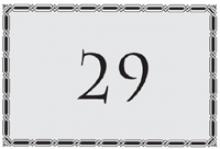 Spider Bones
Spider Bones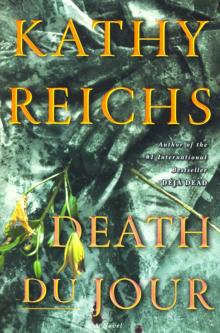 Death Du Jour
Death Du Jour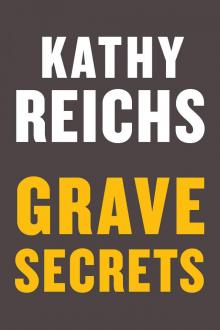 Grave Secrets
Grave Secrets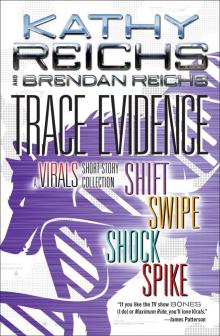 Trace Evidence: A Virals Short Story Collection
Trace Evidence: A Virals Short Story Collection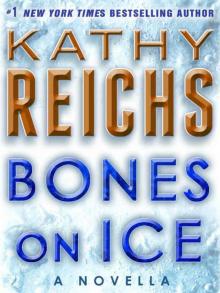 Bones on Ice
Bones on Ice The Bone Code
The Bone Code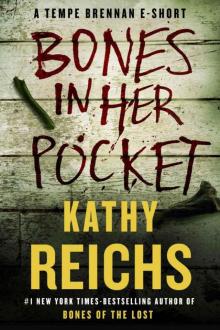 Bones in Her Pocket
Bones in Her Pocket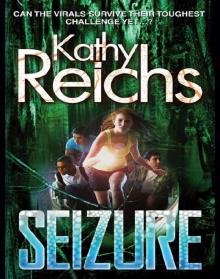 Seizure:
Seizure: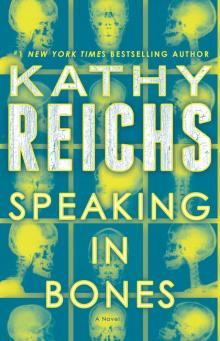 Speaking in Bones
Speaking in Bones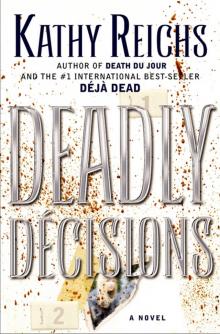 Deadly Decisions
Deadly Decisions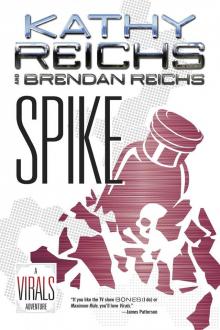 Spike
Spike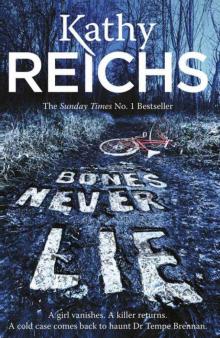 Bones Never Lie
Bones Never Lie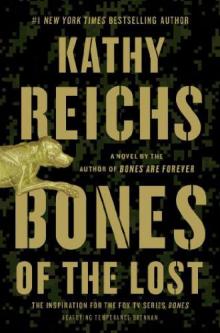 Bones of the Lost
Bones of the Lost Virals 03.5 - Swipe
Virals 03.5 - Swipe Exposure
Exposure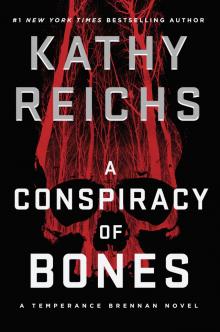 A Conspiracy of Bones
A Conspiracy of Bones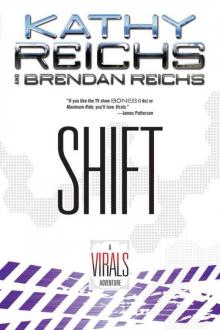 Shift (tory brennan)
Shift (tory brennan)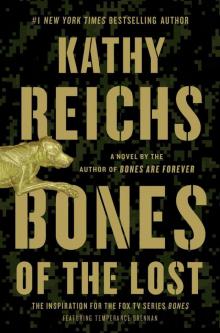 Bones of the Lost: A Temperance Brennan Novel tb-16
Bones of the Lost: A Temperance Brennan Novel tb-16 Virals tb-1
Virals tb-1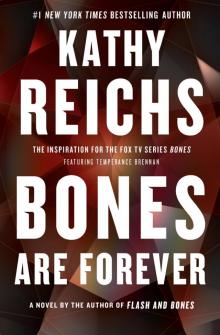 Bones Are Forever tb-15
Bones Are Forever tb-15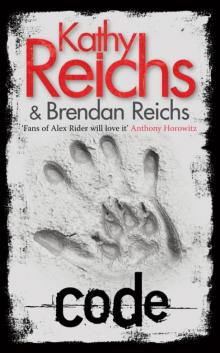 Code tb-3
Code tb-3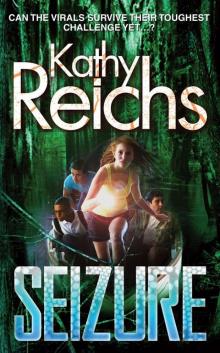 Seizure tb-2
Seizure tb-2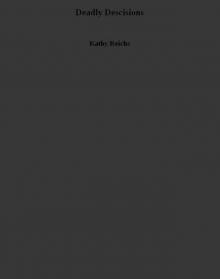 Deadly Descisions
Deadly Descisions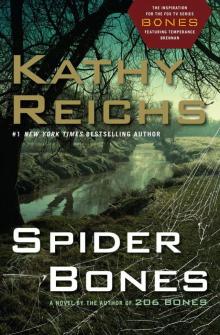 Spider Bones: A Novel
Spider Bones: A Novel